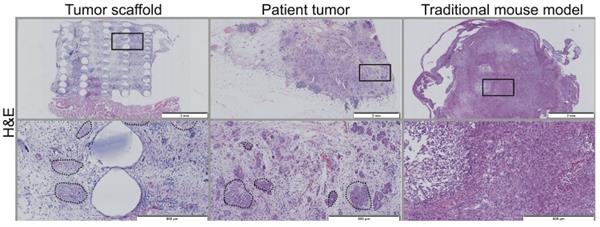Researchers from Ghent University (in Belgium) implemented a preclinical model of peritoneal metastasis using 3D printing technology. The tumor model could contribute to the advancement of chemotherapy treatments.

Peritoneal metastasis
Peritoneal cancer is a major cause of death. This form of cancer is not often diagnosed until it’s in an advanced stage hence the importance of discovering methods to improve therapeutic progress. In that context, researchers from Ghent University developed a hybrid hydrogel-polylactic acid (PLA) scaffold that mimics the architecture of peritoneal metastases at the qualitative, quantitative and spatial level.
The 3D bioprinted model, implemented using a combination of 3D printing and multicellular cell culture, would precisely replicate peritoneal metastasis than any other models so far.

3D printing enables to build scaffold structures from PLA. The latter were treated with plasma, gelatin and UV light. Researchers then created different models with various porosities and mechanical and biochemical properties. They then cultivated a set of cancerous and interacting cells, which led to a more clinically relevant model.
Once the cancer-associated fibroblasts (CAF) were combined with tumor cell lines, there was a formation of tumor structures (spheroids) in vitro, which demonstrated the importance of CAF in preclinical models. One can read: “Scaffold implantation into the peritoneum allows long-term follow-up (>14 weeks) and results in a time-dependent increase in vascularization, which correlates with cancer cell colonization in vivo.”

Furthermore, according to the team, the implant showed signs of vascularization (formation of blood vessels) because of the CAF and cancer cell interaction. Last, the results of this research suggested that the 3D printed tumor model was closer to the real thing than any existing preclinical models.

This could definitely mark a milestone in improving peritoneal metastasis treatment therapies. You may read the entire research entitled “Heterocellular 3D scaffolds as biomimetic to recapitulate the tumor microenvironment of peritoneal metastases in vitro and in vivo” on sciencedirect.com.
For further information about 3D Printing, follow us on our social networks and subscribe to our newsletter!






